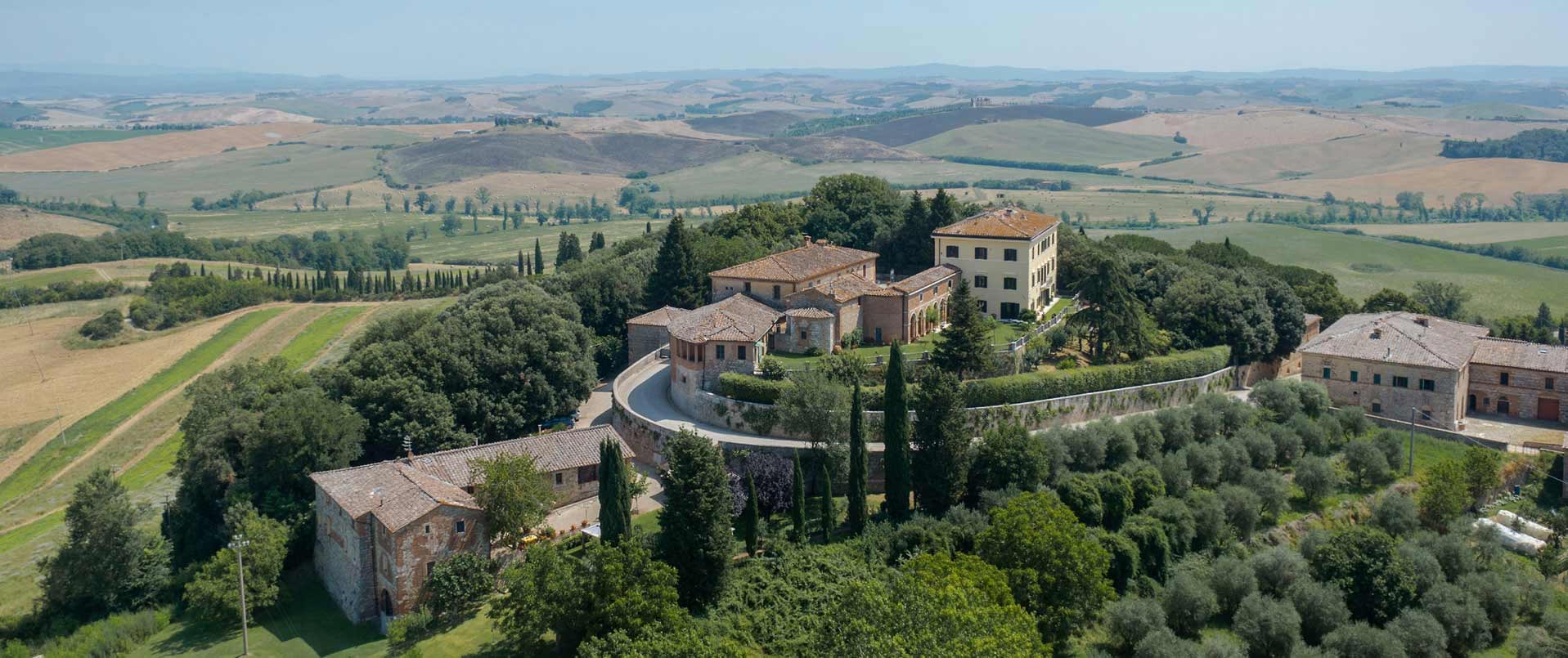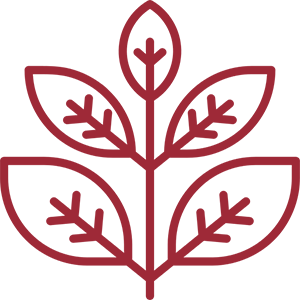
Villa Tiepolo Passi is built in Venetian Baroque style according to the canons of Vincenzo Scamozzi. On the ground floor of the main house, there are ceilings in the Sansovino style and a Venetian painting gallery from the 17th century; on the main floor, there are sumptuous frescoes by Pietro Antonio Cerva, known as the Bolognese. Outside, there is a large Selese with the busts of philosophers Democritus and Heraclitus, remnants of an ancient sundial, and a fishpond adorned with statues of Wisdom and Prudence, works by Giuseppe Bernardi and his nephew Giovanni Ferrari, known as the Torretti, who had a workshop with the young Antonio Canova.
Beyond the Italian garden with a fountain, ornamental vases, and grottoes, in the historic Romantic park, there is the family chapel built in 1774, after the fire of the original one. Frescoed in the Tiepolesque style by Giambattista Canal, the last highly skilled painter of the “fa presto” current, this Church, still a place of worship, is dedicated to the Madonna of the Rosary, and Pope Pius VI granted it a plenary indulgence, still valid today. At the back of the villa, stables, garages, granaries, cellars, and guest quarters: magnificently restored, they have regained their ancient functions, opening up to hospitality. Beyond the bridge over the Rio Piovensan, there are vineyards, orchards, meadows, and ancient hedges marking the boundary of the estate.
The History of Villa Tiepolo Passi
The first settlement of Villa Tiepolo Passi dates back to the early 16th century, and the villa reached its current dimensions a century later under the commission of Ermolao Tiepolo, Procurator of San Marco and Senator of the Serenissima Republic. The villa stands on the ancient embankment of a prehistoric Venetian hillfort, which later became a Roman military outpost (castrum). The location is geographically strategic, evidenced by the extraordinary perspective avenue extending in front of the villa (Cardo Romano), which aligns in a perfect straight line with Venice to the south and Belluno and Cortina D’Ampezzo to the north, along the path of the Piave Valley. In the 19th century, the villa, embellished over the centuries by renowned artists, passed through family lines to the Counts Passi de Preposulo, an ancient Bergamasque family, who maintain it today, managing its resources in the style of the past: stays, guided tours, educational visits for schools, organic farming, landscape care, and a cuisine that draws on ancient family recipes. During the Great War, it became the headquarters of the Army Corps and an Italian Red Cross hospital: King Victor Emmanuel, Generals Diaz, and Cadorna stayed there.
The Historic Park
Noble, playful, and symbolic garden and rustic park, with the Brolo (the ancient vegetable garden) and the cultivated fields of the estate: 35 hectares surround Villa Tiepolo Passi, telling its origins. The park is part of Paolo Pejrone’s Italian Garden Route.
Noble Park and Water Circuit
The large Italian garden characterized by elements of boxwood topiary, with a central fountain and ornamental vases, extends to the south, beyond the fishpond, with a monumental perspective avenue of two and a half kilometers, the Stradon, an ancient Roman cardo. On the sides, the Romantic park features hills, grottoes, two greenhouses, and centuries-old plants. A large six-meter water wheel fed the villa’s irrigation system (currently under restoration), bringing water to the stables, cellars, laundry (the lisciera), and fishpond, creating a pond at the top of a hill for the winter production of ice to be stored in the grotto below used as an ice house (giasera). A small lake served as a water reserve for the vegetable and fruit crops of the villa’s Brolo.
The Rustic Park of the Agricultural Estate
At the back of the villa, the Rio Piovensan is crossed by a brick and stone bridge that gives access to the rustic park of the Agricultural Estate, bordered by ancient hedges, with a hunting Roccolo and cultivations. The Brolo, the ancient vegetable garden, is an integral part of the history and agricultural tradition of the villa and still hosts numerous rows of fruit.
Guided Tours
An exciting visit, for the beauty of the places and the history enclosed within: over four centuries of lived experience, among loves and wars, artists and travelers, saints and libertines.
Stays in the Guest Quarters
An authentic experience between history and nature. In the guest quarters, one is immersed in a delightful country-chic atmosphere: the rooms overlook the landscape of the countryside, the stream, and the centuries-old trees of the courtyard, and the hospitality is that of times gone by. The silence is interrupted by the call of peacocks, one meets the hosts, and walks in a very gentle landscape. It is a unique holiday, marked by eco-sustainability, with renowned destinations not far away. Possibility of bike rental, boat and canoe trips, horseback riding, golf, yoga, personal trainer, and spa. Availability of two double rooms and a loft with kitchen and living area. Possibility to rent the entire apartment.
Experiences Academy of the Fields: workshops in nature, discovering “life in the villa”. A return to the land, through workshops and experiences in painting, weaving, cooking, horticulture, yoga, emotional walking, and recreational-educational activities for adults and children. Reclaiming the slow rhythms of nature, immersing oneself—not only physically but also mentally and philosophically—in the ancient and sustainable landscape surrounding the Venetian villa. Educational projects and school-work alternation (PCTO). Presence of students of all levels for “ad hoc” educational visits and the development of PCTO projects related to the various aspects of the villa such as landscape, architecture, art, economic activities, recreational activities, worship, etc.
Receptions and Events
The Coach House, ideal for executive meetings, and the Tesa dei Tiepolo, in the green of the Agricultural Estate, are perfect for country-chic style meetings and receptions, strictly exclusive.
Products
The Brolo, the ancient vegetable garden, and the countryside of the agricultural estate mark the seasons with productions of fruit, vegetables, and wild herbs. With the products of the countryside, here are floral arrangements, fruit bowls, cakes, preserves, jams, and mustards. For sale at the villa with the ancient house recipes.
Itineraries
Between the Lagoon and the Dolomites, a wonderful journey. The villa is an ideal starting point for beautiful excursions in the Venetian mainland, rich in fascinating and easily reachable destinations. Proposals for tailored itineraries for a day, a weekend, or several days with the possibility of accommodation for individuals, families, or groups.
 Accommodation
Accommodation
 Co-Working
Co-Working
 Film sets
Film sets
 Gardens
Gardens
 Parks
Parks
 Pet Friendly
Pet Friendly
 Private events
Private events
 Residences
Residences
 Visits
Visits
 Weddings
Weddings
 Cultural tourism
Cultural tourism  Cyclotourism
Cyclotourism  Excursions
Excursions  Gardens
Gardens  Hiking
Hiking  Historic Homes open to visitors
Historic Homes open to visitors  Nature
Nature  Sports
Sports  Walking itineraries
Walking itineraries  Wine tourism
Wine tourism  Winery
Winery